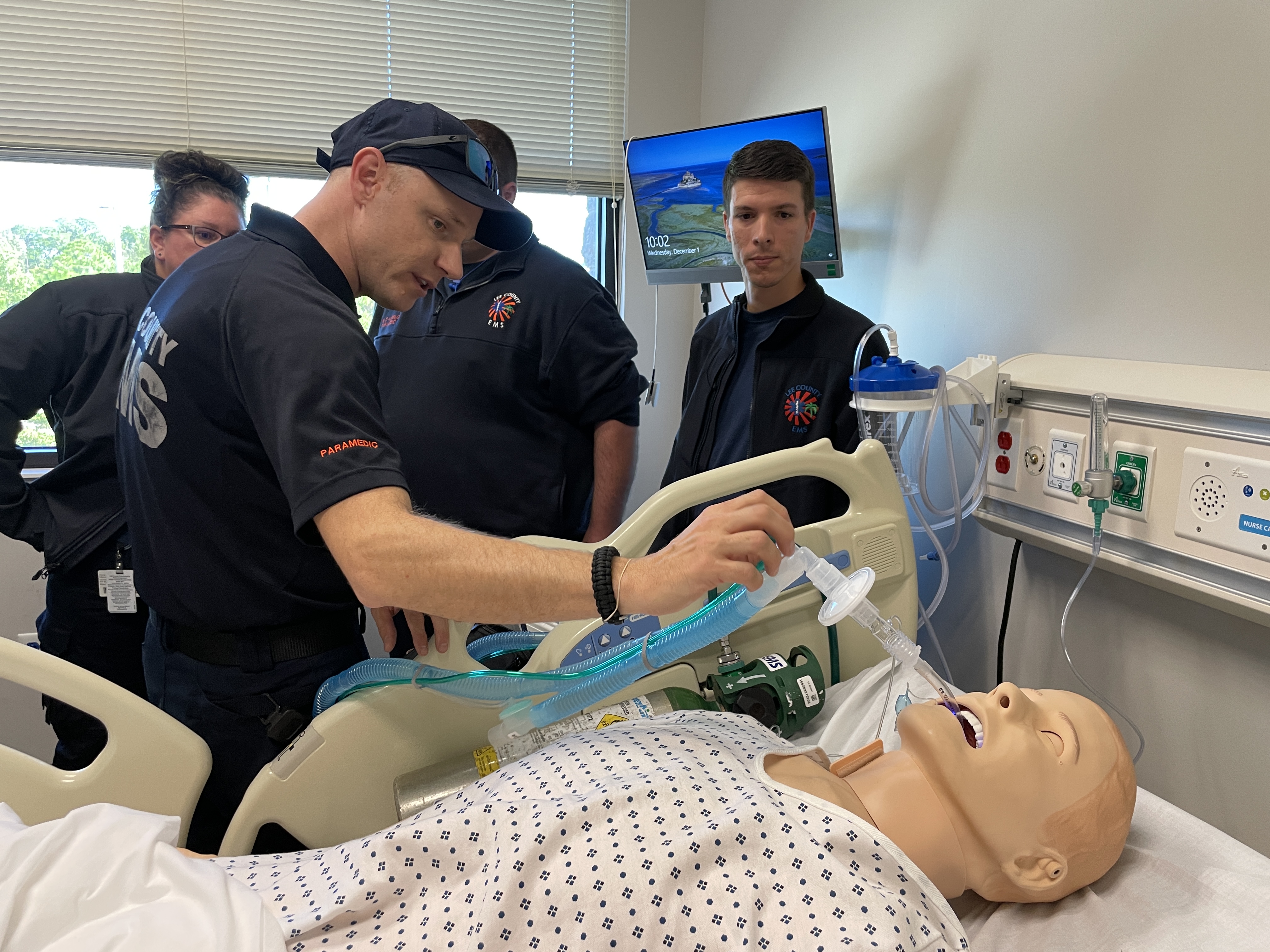Training & Staff
Development
The
training and development of our Emergency Medical Services (EMS) staff is
critical to ensuring our employees provide the highest level of pre-hospital
emergency medical care and top-notch customer service. EMS Training develops
and conducts programs that continuously educate and develop these attributes in
our employees.

EMS Training is led by the Deputy Chief of Training, who oversees the staff and
the division's short- and long-term training goals. The Training Captain works with the Deputy Chief to
develop the educational programs necessary for continued state licensure and
the evidence-based medicine delivered by the emergency medical system.
Three Lieutenants are also detailed to EMS Training, and are responsible for
oversight of the Field Training Officer Program, continuing education training,
and recertification courses.
Field Training Program
At the heart of our training and development program is our Field Training Program. The Field Training Program is a series of didactic sessions, on-the-job training, and evaluation processes to ensure that our emergency medical technicians and paramedics are prepared to provide the highest level of emergency medical care and customer service to our patients. This process can take as long as six months.

New Employee Orientation Program
New employees to the organization start with two weeks of didactic training. This training provides the employee with information necessary to hit the ground running and ensures that they meet the minimum state and local requirements for the performance of basic job functions. This training includes sessions on how to use the division's technology resources, skill stations on critical pieces of equipment, and emergency vehicle operations.
Once an employee has satisfactorily completed the two-week new employee orientation, the employee is released to a Field Training Officer (FTO). The FTO is a credentialed paramedic who serves as both a leader and mentor to the trainee. The FTO helps guide their learning and development by evaluating their progress against established standards. In addition to evaluating their performance on emergency medical calls, the field trainer evaluates the employee on their readiness to sit for operational and medical credentialing. The employee must also pass written exit exams before progressing to the Medical Credentialing Board.
Operational Credentialing
New employees may not operate as a second crewmember on an ambulance until they have met the division's Operational Credentialing requirements. This Operational Credentialing ensures that they have the knowledge and skills necessary to operate the emergency vehicle and function in a capacity to assist their Field Training Officer without extensive direction. The evaluation consists of an oral interview with the employee's Shift Commander.

Medical Credentialing Board
The
final step in the employee's progression is Medical Credentialing. The Medical Credentialing Board, comprised of staff from
the Office of the Medical Director, is where an employee's knowledge and
understanding of the division's clinical guidelines is
tested. The candidate is presented with a series of scenarios, and the
candidate must explain in great detail the processes, procedures and
medications that they would employ in the course of their care.
Common Treatment Guidelines
All basic and advanced life support providers in the county are
required to utilize the Lee County Common Treatment Guidelines, which
standardizes care across pre-hospital providers.
The
Department of Public Safety provides protocols electronically on this page, as
well as through the Paramedic Protocol Provider Agency Application. This
app is free, and can be downloaded at the links below:


PDF format: Common Treatment Guidelines